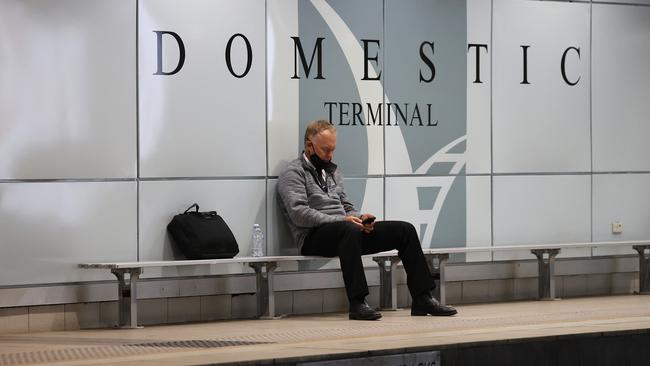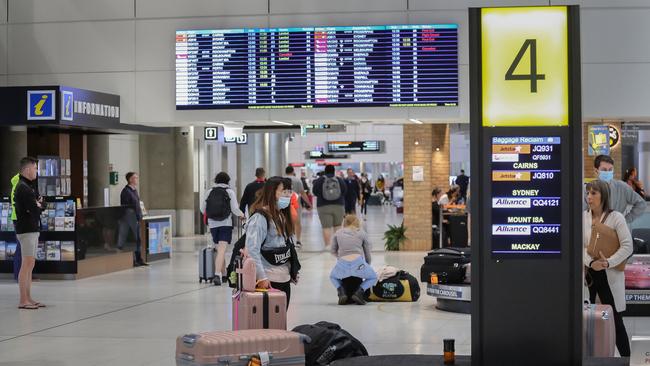Has the Zoom meeting killed business travel?
Holiday travel is booming again, but Australian business travellers are going nowhere, fuelling industry fears that tech may be permanently taking its place.

Travel industry leaders fear Zoom and Teams technology has become permanently entrenched in Australian corporate life, to the detriment of intercity air travel.
Their fears have been supported by new domestic aviation data from the Bureau of Infrastructure, Transport and Regional Economics showing key air routes are still a long way behind pre-COVID levels compared to leisure routes.
The March statistics showed a total of 2.8 million people travelled on commercial airline flights in the month, down 8.9 per cent on a year ago.
Although Melbourne-Sydney rebounded to be Australia’s busiest route once again, passenger numbers were 18 per cent below that of the same time last year, while Brisbane-Sydney was 16.8 per cent down on March 2020.
In contrast, leisure routes such as Sydney-Ballina, Melbourne-Gold Coast, Brisbane-Cairns and Melbourne-Sunshine Coast saw significant increases in passengers year-on-year.
Just under 45,000 people flew between Sydney and Ballina in March, which was almost twice as many than a year ago, and Melbourne-Sunshine Coast traffic increased 40 per cent.
The divide between the cities and regions was further highlighted by airport traffic data, showing Australia’s busiest gateways continued to struggle.
In March, the top ten airports recorded 12.4 per cent fewer domestic passengers compared to a year ago, while regional airports enjoyed a 6.6 per cent increase.
Ballina Airport saw the strongest growth of 96 per cent, while traffic through Hamilton Island and Broome surged 57 per cent and 78 per cent respectively.
Resources towns including Newman, Karratha, Kalgoorlie, Port Lincoln and Mackay clocked sizeable double digit growth as well.
The statistics also showed charter flights continued to gain popularity, carrying 310,500 people in March, which was 35.6 per cent more than a year ago.
The figures underlined the position of airline CEOs that leisure travel had returned strongly in Australia but the business market was lagging due to ongoing hesitance to fly interstate, and the embrace of Zoom and Teams technology.
Australian Airports Association chief James Goodwin said its research found business travellers accounted for just a third of current domestic passengers, well behind those visiting family and friends (48 per cent) and holiday-makers (43 per cent).

He said it was time companies reviewed their travel policies and “got back to business.
“Online meetings served a purpose at height of the pandemic, but nothing beats seeing your colleagues, stakeholders or business partners in person,” said Mr Goodwin.
“Heading back to the major cities for work via our airports will help to fill CBD hotels and provide a major boost to cafes and restaurants which are reeling from thousands of people still working from home.”
The research found fears of snap border closures remained the greatest barrier to interstate travel with 61 per cent of respondents saying that had hindered their willingness to cross borders.
Australian Tourism Industry Council executive director Simon Westaway said there was still not enough people moving between capital cities, which was hurting CBD operators.
“Capital city travel has been very low and limited,” Mr Westaway said.
“Recent Tourism Research Australia data showed capital city visitation is down about 50 per cent.”
Despite the statistics, Mr Westaway said ATIC was encouraged by the positive approach domestic carriers were taking, with competitive fares on offer and a high frequency of intercity flights.
“It’s welcome to see capacity coming back (but) there’s a sense that capital city trade still has a long way to go,” he said.
“The longer we have domestic borders open, the more encouraging that will be for people to get out and take the plunge.”







To join the conversation, please log in. Don't have an account? Register
Join the conversation, you are commenting as Logout